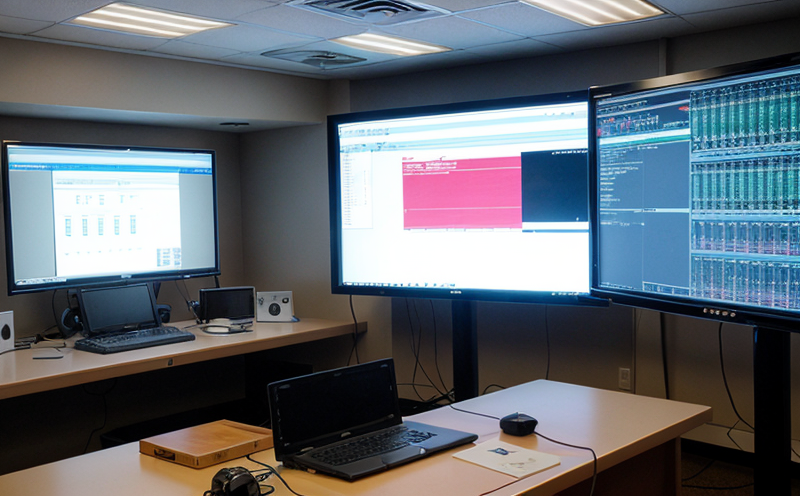EN 50657 Software Testing for Onboard Signaling Control Systems
The European standard EN 50657 specifies software testing requirements for onboard signaling and control systems used in railway applications. This standard ensures the safety, reliability, and interoperability of critical railway signaling systems that are responsible for train operation and traffic management.
Compliance with this standard is crucial as it directly impacts public safety and operational efficiency within railways. The standard outlines detailed procedures for verifying software functionality, ensuring that all system components interact correctly under various conditions. It addresses the lifecycle from initial design through to final deployment, emphasizing continuous monitoring and validation throughout each stage.
The testing process involves rigorous simulation scenarios designed to mimic real-world operating environments where potential faults or anomalies could occur. These simulations cover typical operational modes as well as fault tolerance tests intended to identify any vulnerabilities within the software codebase before deployment in live systems. By adhering strictly to these prescribed procedures, manufacturers can demonstrate compliance with industry best practices while also ensuring they meet regulatory requirements.
Our expertise lies not only in executing EN 50657 compliant tests but also providing comprehensive support throughout every phase of your project lifecycle – from initial consultation through final certification. With state-of-the-art facilities and experienced personnel, we offer tailored solutions that align perfectly with your specific needs ensuring complete confidence when presenting results to regulatory bodies.
Our commitment extends beyond mere compliance; it includes proactive measures aimed at enhancing overall quality assurance efforts within the railway sector. By leveraging advanced technologies and methodologies, we aim to deliver robust testing capabilities which contribute significantly towards improving safety standards across all aspects of rail transport infrastructure.
Applied Standards
The application of EN 50657 software testing aligns closely with broader international standards governing railway signaling systems. For instance, ISO/IEC 17025 certification ensures that our laboratories maintain high levels of technical competence and impartiality. Additionally, we adhere strictly to EN 50128 which provides guidelines for development processes used in safety-critical software applications.
- ISO/IEC 17025: General requirements for the competence of testing and calibration laboratories
- EN 50128: Railway applications – Software lifecycle processes
By integrating these standards into our methodology, we ensure that all testing conducted adheres to best practices recognized globally within both academic circles as well as practical implementations.
Customer Impact and Satisfaction
Adhering to EN 50657 has tangible benefits for customers seeking reliable solutions in railway signaling and control systems. Firstly, it enhances customer confidence knowing that their products have been rigorously tested against industry benchmarks ensuring consistent performance across different environments.
Secondly, by demonstrating compliance with this standard, manufacturers gain access to broader markets including Europe where adherence is mandatory according to legislation such as the European Railway Directive (2012/34/EU). This opens up lucrative export opportunities for companies operating within the railway sector worldwide.
Thirdly, successful completion of EN 50657 testing provides peace-of-mind knowing that your product meets stringent quality assurance criteria set forth by recognized authorities in this field. It serves as a strong endorsement from experts who understand the unique challenges faced when developing sophisticated signaling systems for rail transport.
Environmental and Sustainability Contributions
The railway industry plays an essential role in reducing carbon emissions compared to other modes of transportation like road or air travel. By ensuring that onboard signaling control systems operate efficiently, we contribute positively towards environmental sustainability goals. Properly functioning signal systems help reduce energy consumption by optimizing train movements thus minimizing unnecessary idling times.
- Reduced fuel usage leading to lower greenhouse gas emissions
- Optimized route planning reducing overall travel time and associated costs
- Enhanced safety measures preventing accidents that could lead to significant environmental damage
Our commitment extends beyond just meeting regulatory requirements; we strive continuously to innovate and improve processes which benefit society at large.





